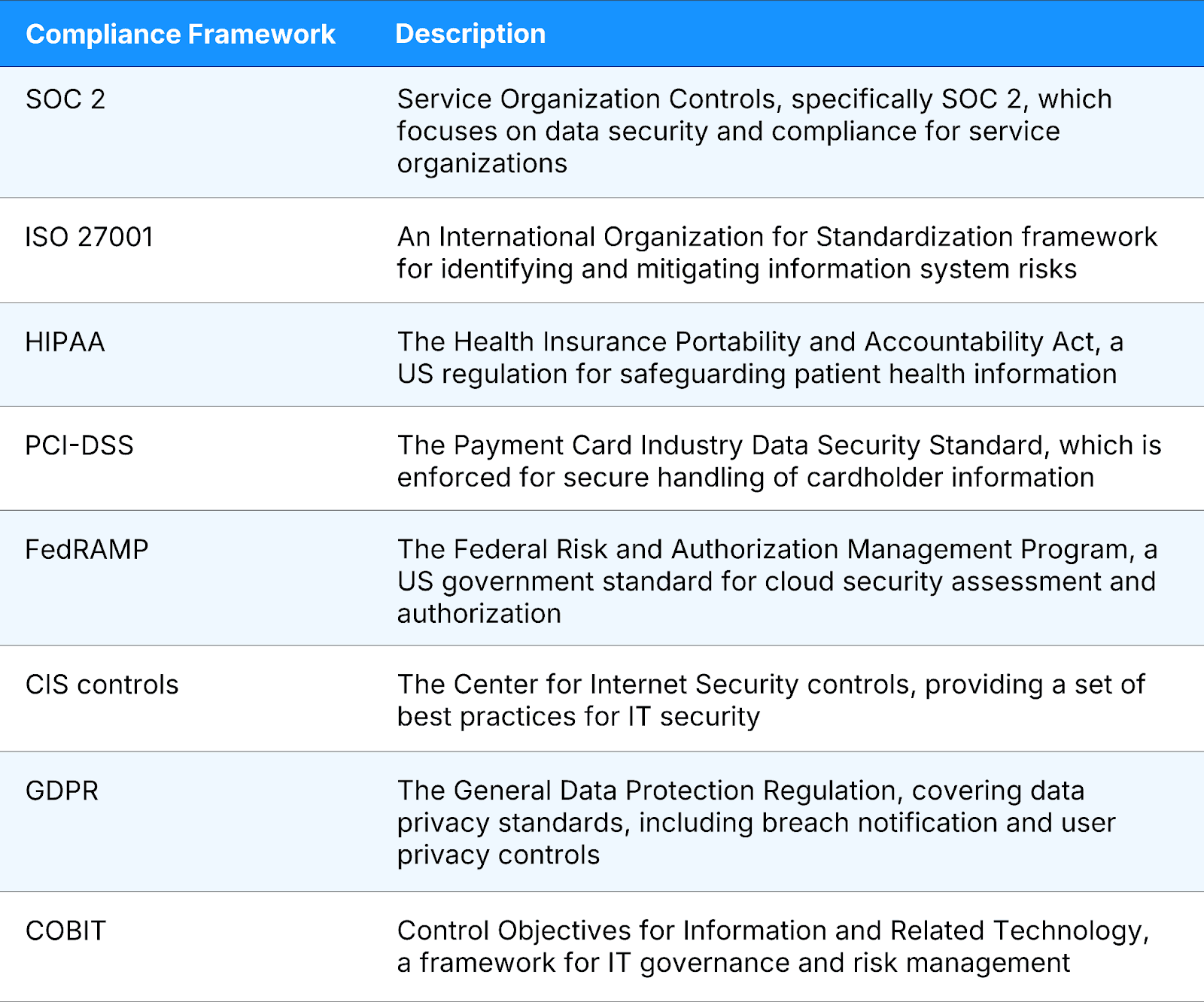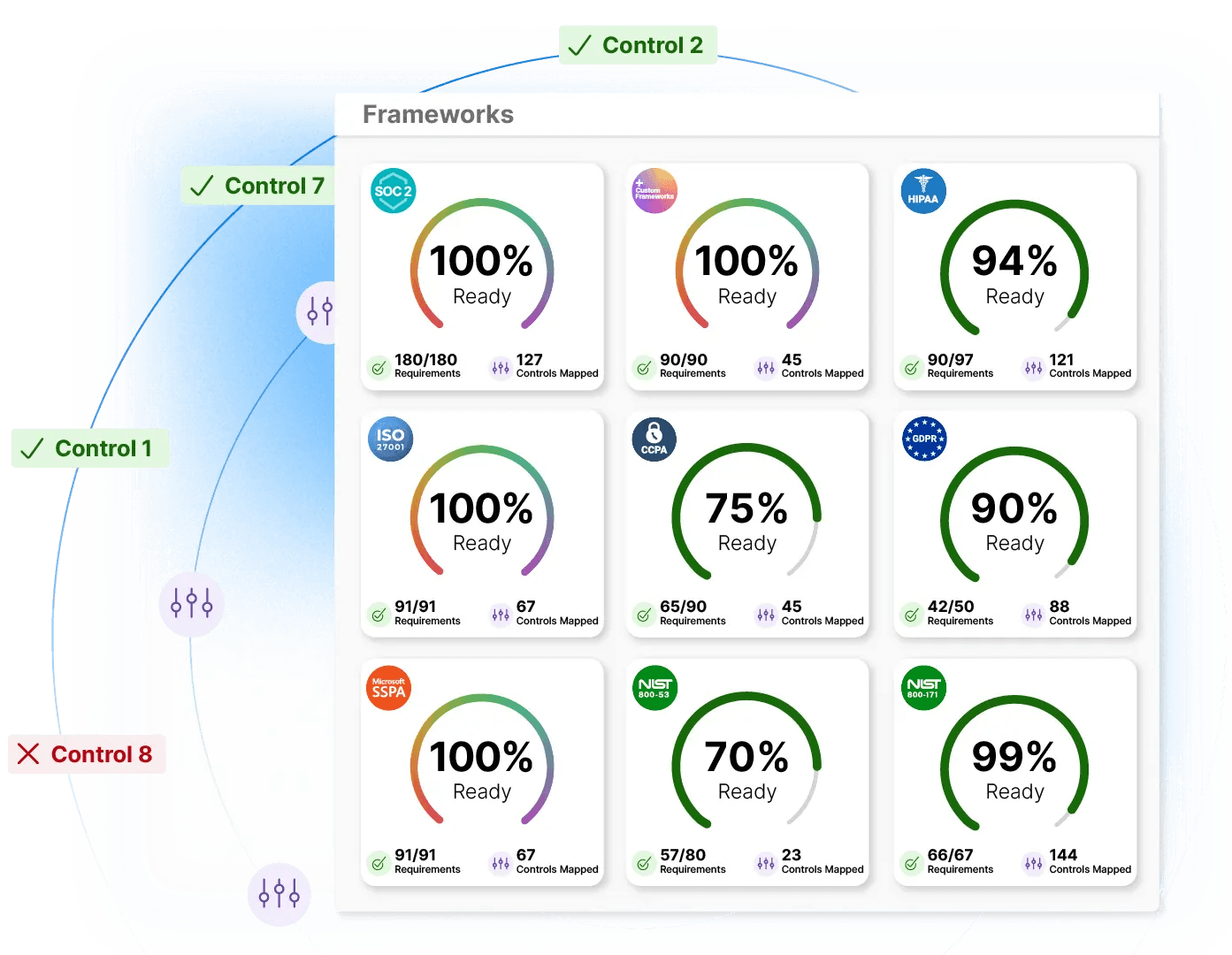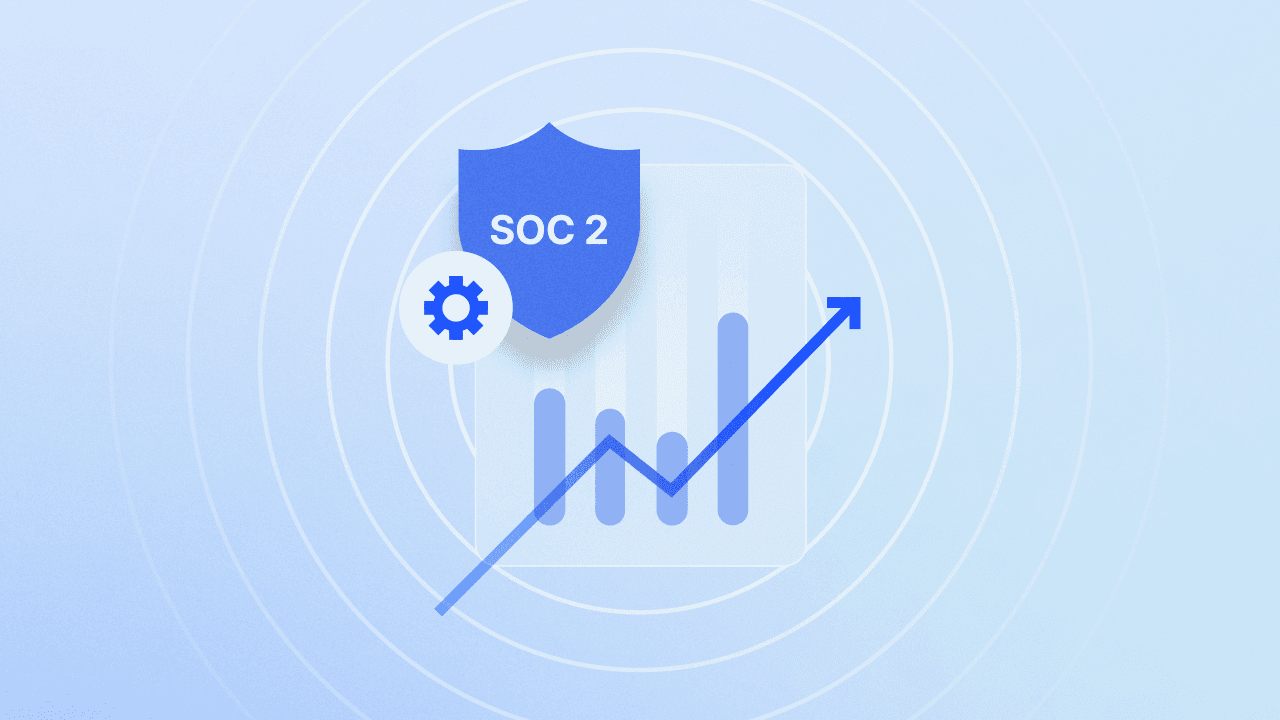Compliance Made Easy: A Startup’s Guide to Getting It Right
Learn how to ensure compliance for your startup by understanding stakeholder expectations, familiarizing yourself with relevant frameworks, training your team, conducting audits, and using automation and GRC tools.
Compliance is a critical component of building a sustainable and successful startup. A strong compliance foundation earns customer trust, protects your business, and promotes overall company growth.
A key component of any startup business plan is ensuring compliance with a myriad of frameworks and standards. While some of these may overlap and could seem to require a duplication of effort, many will vary so greatly that it is critical for the organization to properly plan for them. A good resource to determine this overlap across frameworks is provided through crosswalks, which compare differing standards.
This checklist of best practices breaks down key steps you need to take to ensure that your startup meets the industry compliance standards to which you’ll be held. By the end, you’ll have a clear roadmap to understand your compliance efforts and align them with your business goals in an efficient manner.
Compliance for Startups Best Practices Checklist
Best Practice | Description |
Know your stakeholders and their expectations | Map out all internal and external stakeholders to identify their unique compliance goals to ensure that your strategy aligns with their requirements. |
Get familiar with applicable frameworks | Familiarize your organization with relevant standards like SOC 2, ISO 27001, and GDPR to build a solid compliance foundation tailored to your industry. |
Train your team | Compliance starts with awareness. Conduct regular training sessions to educate employees about compliance standards and their role in maintaining them. |
Conduct an internal audit | Regularly assess your system and processes through internal audits to identify and close compliance gaps. |
Employ continuous monitoring | Use automation tools for real-time insights into compliance metrics and potential risks or changes in regulation. |
Implement a scalable GRC tool | Use governance, risk, and compliance tools to streamline compliance workflows, track progress, and manage policies as your startup grows. |
Know Your Stakeholders and Their Expectations
Going into battle without a plan doesn’t make sense and can prove costly. Startups going into business without considering the requirements they will face to conduct business can get into trouble and slow down sales cycles. Putting a strategy in place includes knowing your startup's internal stakeholders (finance, legal, IT, supply/procurement) and the systems, data, and operations they’ll procure and use to do their jobs.
Additionally, it is critical to know the market your startup is operating in and the requirements in place there. For instance, if operating in the healthcare sector, there will be requirements such as the Health Insurance Portability and Accountability Act (HIPAA); in the defense space, there are requirements such as the Cybersecurity Maturity Model Certification (CMMC). If operating overseas, data regulations such as the General Data Protection Regulation (GDPR) in Europe will come into play. Startups need to know all of this, identify the dependencies and requirements across their environment, and make sure the organization’s strategy aligns with these stakeholders and their needs.
With the emergence of AI technologies, startups leveraging AI must also consider new and evolving frameworks like the EU AI Act, U.S. federal guidance on trustworthy AI, and any sector-specific AI governance requirements.
Get Familiar with Applicable Frameworks
As mentioned above, there are regulations and frameworks that organizations must adhere to when conducting operations, whether in the US, Europe, or elsewhere. On top of this geographic consideration, add into the mix industry-specific regulations and things can get complex quickly. Fortunately, there are several frameworks that are well-known and widely trusted across industries and geographic regions.
For starters, Service Organization Control 2 (SOC 2) is a common requirement when conducting business operations in the United States. While not a prescriptive framework, SOC 2 is a set of trusted service criteria (TSC) that demonstrates an organization’s determination to secure its data. Other frameworks, such as ISO 27001, are globally recognized in the information security space and trusted by the industry as a reliable benchmark for organizations.
Certain regulations impose geographic-specific requirements, such as GDPR. It applies to organizations operating within Europe as well as those outside the continent that offer goods or services to, or handle the data of, European citizens and residents. GDPR is considered one of the most stringent data regulations in the world.
If required to comply with multiple different frameworks, be sure to leverage existing crosswalks that can be found through existing certification bodies, government agencies such as NIST, and others. These crosswalks can help organizations map the provisions of one standard or framework to another (such as ISO 27001 and GDPR). This effort, when applicable, can assist the organization in avoiding duplicative work when gathering evidence for similar objectives found between different standards.
The following table contains a list of common compliance frameworks.
While many of these frameworks have common best practices as their requirements, there are nuances to each that should be understood by startups prior to engaging in business that requires the processing of customer data. A good practice for a startup could be leveraging the prior step on our checklist (knowing stakeholders) by pulling together relevant business and information security stakeholders and identifying which frameworks, and therefore compliance requirements, would be in scope.
Train Your Team
If you’ve never ridden a bike before, getting on and pedaling the first time is usually quite a difficult experience for most. As the old adage goes, practice makes perfect, and this certainly applies to having your employees educated and trained on the multitude of compliance requirements that can mean the success or failure of the startup. Most startups will probably begin with manual efforts to achieve compliance, and this makes it all the more important for employees responsible for meeting compliance requirements to be well-versed in the artifacts and evidence necessary to meet compliance.
It is recommended that both internal training and awareness campaigns, as well as external training and certifications, be leveraged when preparing the compliance team and others who will support these efforts on behalf of the organization. Internal training sessions and awareness campaigns reinforce company-specific policies that are pertinent to the compliance requirements. At the same time, external certifications and courses provide in-depth knowledge of compliance frameworks such as ISO 27001, SOC 2, and/or HIPAA.
Employees who manage compliance should be equipped with both theoretical understanding and hands-on experience in collecting, organizing, and presenting compliance evidence. The more the team practices, the more seamless compliance becomes, turning what once felt like an uphill bike ride into a smooth and repeatable process that supports the startup’s long-term success.
Conduct an Internal Audit
Startups often underestimate the role of internal audits in achieving compliance, yet these audits are fundamental to identifying gaps, reducing risk, and establishing accountability. Compliance is not just about passing an external assessment—it’s about proving that security and governance are embedded in daily operations. Internal audits help startups evaluate their security controls, policies, and adherence to regulatory requirements.
Startups with limited resources should leverage automation tools to streamline evidence collection and track compliance metrics efficiently. Audit findings should be documented, with remediation efforts prioritized based on risk severity. This ensures that when external auditors, investors, or regulators review security posture, there is clear evidence of due diligence being performed.
Beyond compliance, internal audits build resilience. Startups that embed continuous assessment into their operations are more prepared to scale securely, respond to evolving threats, and avoid costly last-minute compliance fixes. Regular audits foster a proactive security culture, ensuring that employees follow best practices and that security measures evolve with business needs. Compliance is not a checkbox—it’s a continuous process of commitment to security, trust, and long-term viability. Internal audits make that commitment measurable, repeatable, and aligned with business growth.
As the organization continues its journey toward compliance, it must develop a strategy that incorporates internal and stakeholder needs. This involves identifying and becoming familiar with the relevant frameworks and regulations. Once this is done, the team can be trained on these items, and then it becomes crucial to test the processes and artifacts required for the organization to achieve compliance.
The best way to achieve this is by conducting internal assessments and audits. The assessments will allow the organization to identify how well it meets the requirements of the frameworks and regulations, letting the stakeholders know its overall posture and what needs to be fixed. The internal audit then applies the letter of the law, requiring artifacts and evidence to determine if there are gaps between the organization’s processes and the compliance requirements.
Employ Continuous Monitoring
Regular internal audits, risk assessments, and employee training reinforce adherence to compliance frameworks. Still, startups should also establish alerting mechanisms to detect noncompliance, misconfigurations, or security gaps before they become major issues.
One of the best ways to manage this is through continuous monitoring (ConMon). Change is constant, and changes to an organization due to both internal and external forces occur rather frequently. This causes misalignment in compliance and can pose a grave threat to an organization’s business standing if not treated correctly and diligently. Rather than relying on point-in-time assessments and audits to keep the organization up to date with compliance requirements, continuous monitoring operates as a nonstop assessment of in-scope components against the requirements for those systems and processes.
against your organization’s compliance requirements, giving you much-needed insight and a steady bill of health. This ensures that during audit time, there are no surprises or last-ditch, all-hands-on-deck exercises required by your organization.
Implement a Scalable GRC Tool
A smart strategic move for a startup is implementing a scalable governance, risk, and compliance (GRC) tool. This enables resource efficiency, automation, and long-term adaptability as the organization grows and expands its operations. Startups often operate with lean teams, making it essential to streamline compliance efforts through automation. A robust GRC tool can centralize risk management, policy enforcement, and compliance tracking, reducing manual efforts and ensuring regulatory alignment with minimal overhead.
As the organization grows, new compliance frameworks (e.g., ISO 27001, SOC 2, or GDPR) may become necessary, and a scalable GRC platform can seamlessly integrate these requirements without disrupting operations. Automated workflows, real-time monitoring, and built-in reporting functionalities enhance operational efficiency while maintaining audit readiness, so the organization is fully prepared when the recurring audit time comes.
Overcoming obstacles as soon as possible is vital to the long-term success of a startup, and daunting compliance requirements are one of the primary obstacles a company can face in its early days. However, taking important steps upfront can enable a startup to meet compliance requirements with minimal disruption to staff and operations, ultimately leading to better business decisions. Some of those covered include:
Aligning compliance requirements with business goals, including stakeholder needs
Identifying and understanding the frameworks and standards to which your startup must adhere
Having a team that is trained and put in the best position to understand compliance requirements
Performing internal audits to identify and fix gaps before the external audit comes
Establishing automated continuous monitoring efforts to keep tabs on the environment and eliminate any late surprises that could doom compliance efforts
Leveraging a scalable GRC tool that will enable and grow with your startup.







